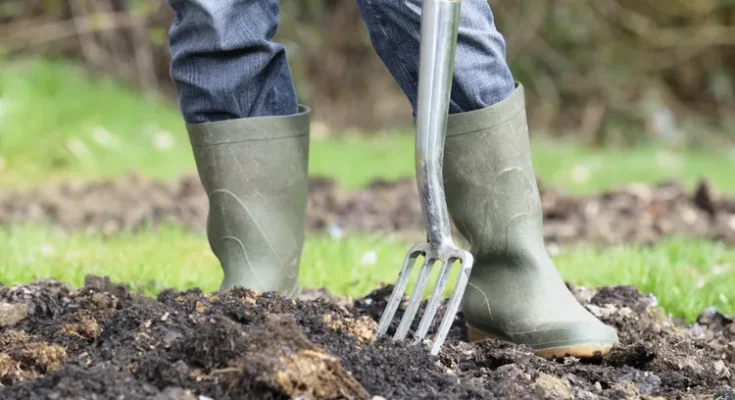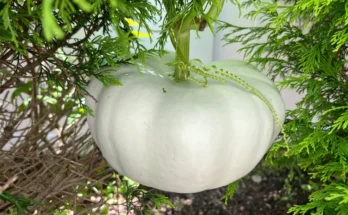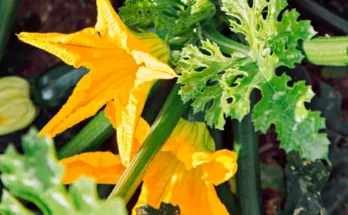Here’s how to deal with overwatered clay soil correctly so you can still grow a beautiful, productive garden.
Clay soil holds water longer than other soil types, and that can cause problems for your plants. Frequent rains, heavy storms, or even forgetting to turn the sprinkler off during a weekend trip can cause a waterlogged mess that takes forever to clear. While there aren’t many quick fixes for overwatered clay soil, here are some steps you can take to reduce the problem in the future.
Problems with Overwatered or Soggy Clay Soil
Clay soil consists of very fine particles. Those fine particles can stick together tightly, reducing pore space for water to move through or percolate. While water runs through sand almost immediately and slower through loam and silt, clay can present such an obstacle to water movement that it is often used as a liner in ponds and earthen dams. If your soil is clay, you’ll need to pay more attention to drainage.
Overwatered clay soil can become soggy, and eventually, water may stand on the surface of the ground, sometimes for days or even weeks. Too much water blocks oxygen from reaching roots, which can drown plants.
Anaerobic conditions (not enough oxygen) caused by waterlogged soil also contribute to the growth of undesirable types of bacteria, not the good (aerobic) bacteria we want in our garden soil as part of the living soil food web. Overwatered conditions can drown soil microorganisms, worms, and insects, making a bad problem worse.
Ways to Correct Overwatered Clay Soil
We can’t change the weather or dig up all the clay and replace it with well-draining loam, so that leaves two main options for dealing with overwatered clay soil: change how the water moves on your property and change the soil structure to improve drainage.
1. Change Your Drainage Patterns
Water ponding on clay soil is common, and poor surface drainage worsens matters. Even a relatively flat yard will have some micro-gradients, and water will always try to follow the path of least resistance. If your culverts are clogged and the ditch fills, then water has nowhere to go until it evaporates.
While an actual ditch is impractical for most yards, a swale can work wonders at moving water slowly, safely, and efficiently away. A swale is a broad, super-shallow ditch. They should be shallow enough—only a couple of inches deep and a few feet wide—that you don’t even notice them. Water will slowly and gently flow down the swale and off to the ditch or somewhere else it oversaturate your soil.
2. Build Raised Beds and Berms
While some plants don’t mind “wet feet,” it’s a problem for many. A couple of days of standing water can quickly doom a vegetable garden or a perennial bed. Creating a berm is a relatively simple solution. It establishes a well-drained planting area without the formal look of a hard-sided raised bed. It’s also easier to mow around.
But simply piling mounds of topsoil on top of hard clay ground can result in an impermeable layer, both to water and roots. It’s akin to piling soil on your driveway. First remove any grass under your raised berm and loosen the surface so roots can better penetrate the original soil level.
Raised beds are popular solutions for poor drainage, and can look fantastic when blended into the landscape. A berm or raised bed requires some initial labor but provides a better situation for growing plants than waterlogged clay.
3. Work in Organic Matter
Gardeners are always encouraged to add organic matter such as compost, aged manure, or leaf mold to clay soil and work it in. The reasoning is that adding organic matter to any soil, especially clay soil, enhances the pore structure and loosens the soil.
Larger particles create spaces for water to move through and oxygen to penetrate. Root growth and health are enhanced, and even for overwatered clay soils, the improvement in soil structure can be significant. It’s not a one-time event for your garden; keep applying organic matter, and you’ll notice a big improvement.
4. Add Cover Crops and Living Plants
If your garden soil has poor drainage and often is overly wet, a fall planting of cover crops may help. Cover crops break up soggy clay soil, working channels into the subsurface and facilitating drainage. It’s more of a long game, but planting deep-rooted cover crops can create drainage channels, improve water movement through the soil, and add organic matter.
Similarly, overseeding warm-season lawns that go dormant after a frost helps reduce soggy clay conditions during the winter. That’s because when the grass is dormant, it stops pulling water from the soil. Without this water removal, clay soil beneath the sod can become soggy as winter rains add moisture that has nowhere to go. Overseeding with ryegrass in warmer areas keeps living, transpiring plants active through winter, helping to manage excess water.
What Not to Do
Struggling with soggy clay soil is frustrating, but a few things can make it even worse. Don’t be tempted to try rototilling, thinking it will break up compacted soil and improve drainage. This will cause the opposite to happen. The hammering action of tiller tines smashes what little structure and pore space a clay soil has, especially if it is wet when worked.
Adding sand is another action to avoid. It may seem like a good idea because water drains well in sandy soils. However, the sand usually mixes with the clay and becomes a concrete-like substance, which is nearly impossible to fix. Add compost and organic matter, never sand.



